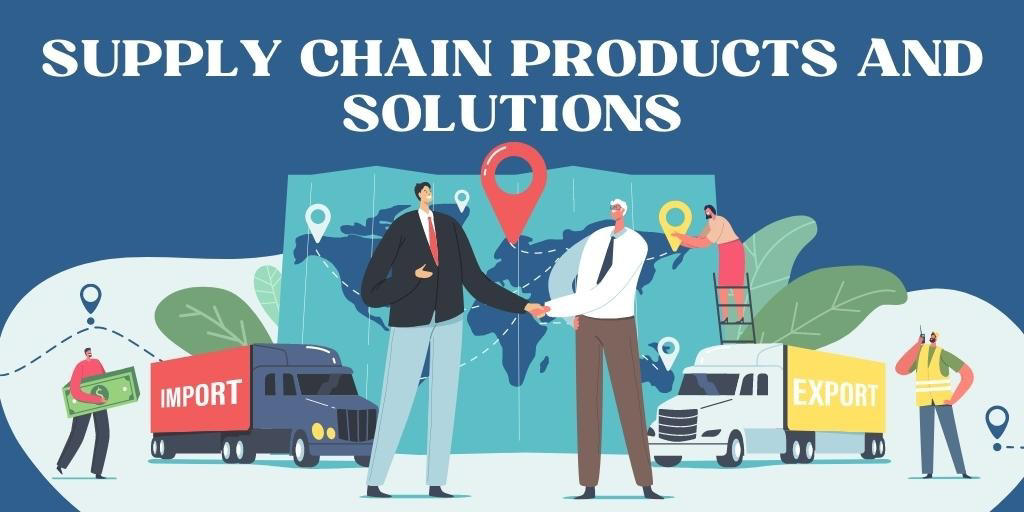Digitally Enhance Asset Management With Software Integration A company’s assets...
Supply chain management includes many processes, such as turning raw materials into final products. There are many parts to a supply chain, such as producers, vendors, warehouses, and couriers. Meanwhile, its functions include product development, marketing, distribution, and even customer service.
As a process, it aims to optimize every aspect of moving goods and services from start to finish. However, supply chain and logistics managers also recognize that customers and customer service are crucial. Additionally, meeting customer expectations can result in more overall sales.
Are Customers Part of the Supply Chain?
What Key Strategies to Improve Customer Service in the Supply Chain Industry?
Notify customers of potential bottlenecks in advance
Not all experiences with shipping and delivery will end at the point of sale. If shipments are lost, damaged, or delayed, it’s essential to let customers know in advance. These solutions can range from simple pop-up messages for notifying customers to personalized emails and calls.
While these solutions aren’t always ideal, customers must receive the message and have their expectations set. Adequate communication remains the best way to help them understand incoming shipping delays.
Provide a means for tracking shipments
In addition to having logistics and warehouse management software, businesses should have the means to track shipments. They should also be able to offer customers the means to track their orders.
Today, many companies provide mechanisms with delivery timelines and regular status updates. Some of these implements even offer GPS tracking for last-mile deliveries. It also helps to provide contacts for further assistance or inquiries. Not only can these contacts add a personal touch to addressing concerns, but they also promote transparency through communication
Practice empathy
Organizations should inform customers when supply chain disruptions occur since the latter will often expect notifications and updates throughout shipping. To better address customer concerns, it’s always good to have helpful information on hand. Supply chain accounting software and services are a great way to provide everything the customer needs.
Agents and managers handling customer service should also keep the following in mind:
• Display empathy and acknowledge the customer’s feelings
• Reassure customers and take ownership of problems
• Act with urgency and embrace creative solutions
• Commit to the customer to show confidence and maintain customer satisfaction
What are the Mistakes of Logistics and Supply Chain Companies?
Customer service doesn’t just end with addressing concerns. Businesses need efficient logistics strategies are ensure reliability in logistics and supply chain management. One way to achieve efficiency is by identifying and correcting specific issues in their current processes.
Here are a few common mistakes that companies should avoid:
Not separating pickup areas and bulk storage.
One of the most common mistakes in warehouses is keeping tight pickup areas and bulk storage in the exact location. As a result, stock takes up space meant for products that need to be moved quickly, such as perishable goods or food items.
Assigning designated spaces in warehouses can prevent any potential mix-ups. Managers can easily monitor different products this way, especially when using warehouse management software.
Over reliance on cost estimates
Relying only on estimates for shipping costs means that financial departments can’t account for other variables, like distance and location. Getting accurate price quotes and figures for better budgeting is essential to avoid miscalculations.
By getting accurate figures and doing calculations, businesses can better set their expectations and stay within budget.
Lacking the proper shipping equipment
Moving goods and services from one location to another can make or break logistics operations.
The reason is that supply chain management requires specific programs and equipment to both move and store goods. The lack of heavy equipment can cause damage to fragile products and potentially affect overall loading and shipping.
How Can Companies Improve Supply Chain Efficiency?
Customer service can pull a lot of weight, but a streamlined internal logistics strategy is what cements rapport. Companies can achieve both by paying attention to the latter.
Supply chains can be quite complex, but complete overhauls aren’t always needed to improve efficiency and performance. Whether raising awareness or focusing on training and investment, small things always leave a lasting impact.
Here are a few strategies companies can use to improve their supply chain management:
Improve your distribution network
Most logistics companies often have two approaches to distribution: a cluster approach and a holistic approach. Using a cluster approach, managers group similar documents to observe specific processes. Meanwhile, a holistic approach focuses on understanding how processes and components work together.
Using either allows businesses to determine which processes are working together and which should be refined.
Building healthy relationships with suppliers
Suppliers can be just as crucial as customers when ensuring an efficient supply chain. They are responsible for tracking any work-in-progress inventory and delivering quality products.
Finding reliable suppliers is one thing, but keeping them is another. Building and maintaining healthy relationships with suppliers matters since it allows for better planning in case of shortages or delays.
The best way to do so is with clear and open communication enabled by tailor-fit supply chain products and solutions. It allows businesses and suppliers to be more responsive to each other’s needs and complete customer orders faster.
Embracing technology
The best way to boost supply chain efficiency is through automation and technology.
Many time-consuming tasks, like order processing and shipping, often take even more time using pen-and-paper methods. With so many processes taking place simultaneously, managers can find tracking challenging.
Programs like warehouse management or accounting software are great ways to automate these tasks. Many currently available software solutions offer both in one, letting users do more within one platform.
Recent Blogs
Why It Pays To Invest In An Asset Tracking Software
Why It Pays To Invest In An Asset Tracking Software...
How Does Equipment Tracking Software Help With Construction?
How Does Equipment Tracking Software Help With Construction? In construction...


